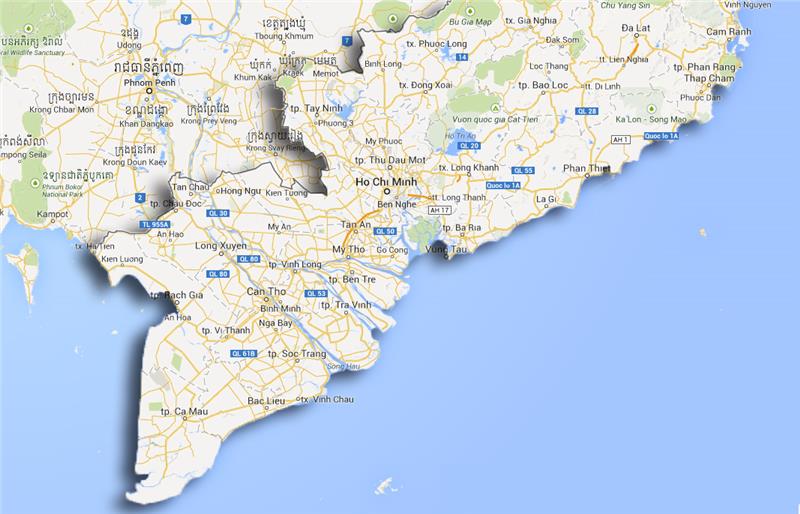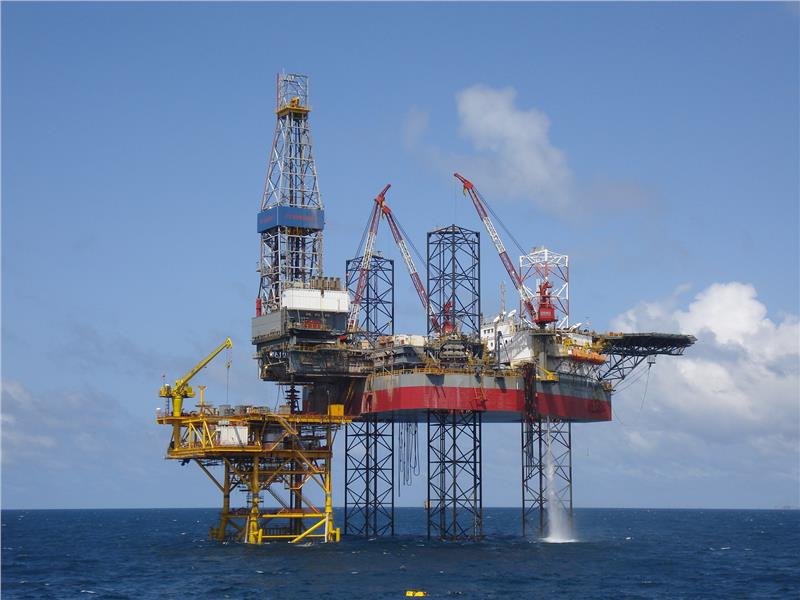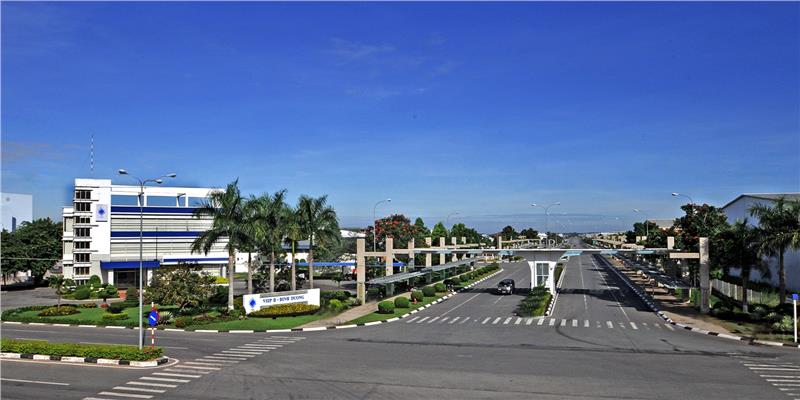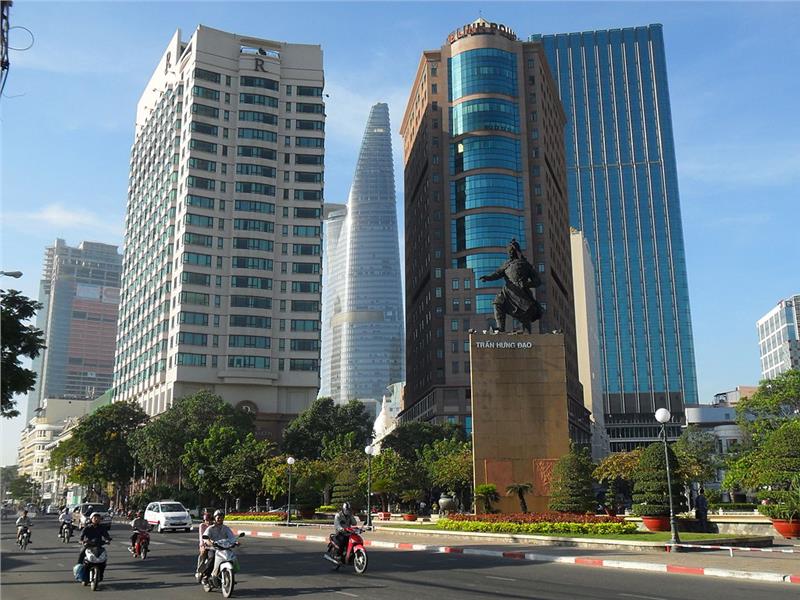Southeast Vietnam is the region having the most developed economy in Vietnam with high population and leading top in exports, foreign direct investment, GDP, and other socio-economic sectors. Foreign direct investment is majorly focused in such provinces as Dong Nai, Binh Duong, Ho Chi Minh City, and Vung Tau. In 2006, Vung Tau appealed over US$1.1 billion of FDi, highest in this region. Southeast Vietnam is the key economic quadrangle in Vietnam economy, including cities and provinces: Ho Chi Minh City, Binh Duong, Dong Nai, and Ba Ria - Vung Tau. Although these four provinces account for a modest square in total area of the country, their contribution to Vietnam economy is great. According to statistics in 2004, the economic region comprised 37.40% of Vietnam GDP, contributing 55.76% to State budget, 47.12% of the total value of industrial production.

The Southeast Vietnam is a new land of Vietnam territory. It is the convergence of many urban areas between Central Vietnam and South Central Highlands, with abundance of natural resources as land, forest and minerals. To the west and to the southwest is Mekong River Delta with a great advantage of agriculture; to the east and southeast is the South China Sea with favorable conditions of seafood, oil, gas, and construction of seaports linking commercial relations with countries in the region and in the world. Meanwhile, to the northwest is Cambodia. By dint of this position, good relationships with Cambodia, Thailand, Laos, and Myanmar are established. Thus, Southeast Vietnam plays an important role in economic exchange between southern provinces and other provinces in the countries.

In general, the topography of Southeast creates favorable conditions to develop agriculture, industry and transportation system. Climate in Southeast Vietnam is relatively ideal to regional economic development with little changed weather and abundant rainfall. In addition, agricultural land is one of upsides in this region. Proportions of land used in agriculture - forestry, and in residential use are high in comparison to those in other regions and in the country. Resource of forest in Southeast is quite abundant. By dint of this, that ecological balance is ensured develops silvi-cultural and landscape researches.
Despite of advantageous natural condition for the Vietnam economic development in Southeast Vietnam, in dry season, due to low rainfall, agriculture, other economic industries, and local life are adversely impacted. Simultaneously, in rainy season, the rainfall is so high, causing floods and damaging crops. Major minerals in this region is oil, gas, and bauxite ore with large volume. With a long coastline, Southeast Vietnam possesses four key fishing grounds of Vietnam. In addition, the Nature favors this region with beautiful beaches to develop tourism. Specifically, the labor force in this region is always available. Local employees are high-qualified, and more skillful than those in other regions. This region has a great accumulation of capital and technology with developed infrastructure.

In economy in Southeast Vietnam, Ho Chi Minh City is the largest commercial and economic center of the region in particular and economy in Southern Vietnam in general. Meanwhile, Dong Nai is a large industrial center with Bien Hoa as its center. Binh Duong is a dynamic province appealing many projects of FDI along with Dong Nai Province. Binh Duong has many industrial zones as Di An, Thuan An, and Thu Dau Mot City. All developments in Binh Duong is greatly contributing to the most sustainable development of the region to the whole country. Together with Ho Chi Minh City, Vung Tau, Dong Nai, and Binh Duong combine to form the most developed economic quadrangle in Vietnam. This economic zone contributes 48.6% to State Budget. Ba Ria - Vung Tau is the center of tourism, oil mining and refinery.

The region has a huge advantage of planting industrial trees, husbandry and fishery. Long-term industrial plants include rubber, coffee, tea, cashew, and mulberry, accounting for 32% total area of perennial plants of the country. Other short-term plants are peanuts, soybean, and sugar cane. Among those, sugar cane comprises about 22.5% of total area, and 21.2% of total of national output. Besides, Southeast Vietnam has the strength in planting fruit trees with high economic value. These trees are produced with large-scale towards commodity production with famous planting areas and food production as Lai Thieu, Dong Nai, and Thu Duc. Rice is the main product of this region. Besides, vegetables are developed to meet the market demand in Ho Chi Minh City, Bien Hoa, and Ba Ria - Vung Tau.

The region is the convergence of a large number of industrial enterprises with various fields. The formation of many large industrial zones creates conditions to expand joint ventures with both domestic and international enterprises. Industrial sector is the strength of this region. Industrial production comprises nearly 20% the total value of industrial output of the country. Apart from the expansion of manufacturing fields, investment in modern facilities and equipment for industrial development. Major industries are producing fuels (oil) accounting for 28.5% the total value of region's industry, food production comprising 27.5%, textile making up for 10.9%, chemicals, fertilizers and rubber account for 10.2%. Mechanics and electronics, in spite of low proportion, but appeal a large number of labor force in this region. Industrial products of this region are of exports such as seafood, textiles, consumer goods, and imported substitutes (fertilizers and chemicals). There are two main industrial zones in this region: Ho Chi Minh City and Bien Hoa Industrial Center.
Service is a well-developed industry in Southeast Vietnam, ensuring the need of regional citizens and the development of the entire country. The proportion of service in Vietnam GDP is relatively high. Yet, it has not meet the full demand of production and development. It has not been commensurate with the role of key southern area with many important fields as finance, banking, insurance, science and technology, and tourism with low proportion. Tourism is also an upside of this region. There are many amusement parks as Suoi Tien Part, Dam Sen Park, Nha Rong Wharf, Dai Nam Tourist Park, and Vung Tau Beach City, etc.

- Focusing on perfecting mechanism, policy, and institution on management and administration, especially policies on land, finance, market, labor force, waste treatment, water exploration and use. Besides, it is necessary to issue policies to entice more investment in industry with high technology, supporting industry, clean industry, and high-quality services.
- Quickly shifting economic structure in the orientation of modernization and efficiency makes Southeast Vietnam as well as the key economic southern region become leader in industrialization and modernization. The region needs to develop high value-added industries with modern technology to improve the competitiveness in main industries such as engineering, electronics, chemicals, pharmaceuticals, software industry, new materials technology, and biotechnology. Many high-ranking services in finance, banking, commerce, telecommunication, transportation, science and technology, training, health, and tourism are concentrated.
- Comprehensively boost agriculture with modern management and technique, high quality to meet the meed of urban areas, processing industry and exports; promote the coordination, combination between localities in the region to form policies on development, mobilization and resources distribution to investment, construction of infrastructure; train and appeal more labor, create more jobs, protect environment to coup with climate change; ensure security and defense, protect forest and water resource
- Enhance the cooperation between provinces in the region and provinces in other regions as Mekong River Delta, Central Vietnam and Central Highlands on investment, technology transfer, labor supply, building materials areas and expand products markets
